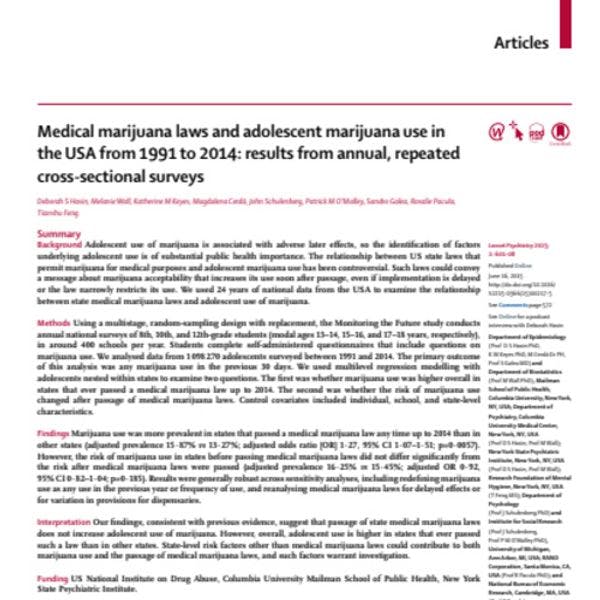Medical marijuana laws and adolescent marijuana use in the USA from 1991 to 2014: results from annual, repeated cross-sectional surveys
Background
Adolescent use of marijuana is associated with adverse later effects, so the identification of factors underlying adolescent use is of substantial public health importance. The relationship between US state laws that permit marijuana for medical purposes and adolescent marijuana use has been controversial. Such laws could convey a message about marijuana acceptability that increases its use soon after passage, even if implementation is delayed or the law narrowly restricts its use. We used 24 years of national data from the USA to examine the relationship between state medical marijuana laws and adolescent use of marijuana.
Interpretation
Our findings, consistent with previous evidence, suggest that passage of state medical marijuana laws does not increase adolescent use of marijuana. However, overall, adolescent use is higher in states that ever passed such a law than in other states. State-level risk factors other than medical marijuana laws could contribute to both marijuana use and the passage of medical marijuana laws, and such factors warrant investigation.
Keep up-to-date with drug policy developments by subscribing to the IDPC Monthly Alert.
Downloads
Topics
Regions
Related Profiles
- The Lancet
